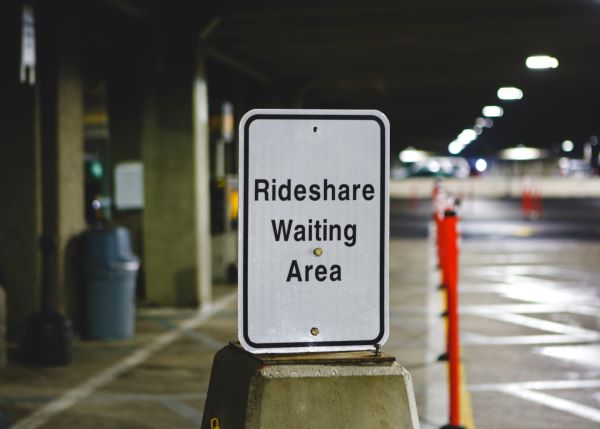
Ridesharing services like Uber and Lyft have revolutionized urban transportation, offering convenient and affordable on-demand rides. However, alongside their rapid growth, there’s been a worrying trend: an increase in ridesharing-related accidents and subsequent personal injury claims.
The Rise of Ridesharing Accidents
The increase in ridesharing accidents is not a recent phenomenon. A 2019 study by the National Highway Traffic Safety Administration (NHTSA) found that fatal crashes involving ridesharing vehicles increased by 137% between 2014 and 2017. The trend continued in 2021, with NHTSA data showing 1,828 injuries and 24 fatalities resulting from ridesharing accidents.
Factors Contributing to the Rise in Accidents
Several factors contribute to the growing number of ridesharing accidents:
1. Volume of Ridesharing Vehicles on the Road
With the increasing popularity of rideshare services, the number of ridesharing vehicles has grown exponentially, leading to a higher probability of accidents. As of 2022, Uber reported having approximately 5.4 million drivers globally. Statista estimates there are 1.7 million rideshare vehicles in the U.S. (1 million Uber, 700,000 Lyft).
2. Driver Inexperience and Fatigue
There are a number of problems here:
- Many rideshare drivers are part-timers, and have no professional driving experience.
- Rideshare drivers often work long hours, in many cases, because they also have other jobs. This increases the risk of fatigue, and the potential for accidents.
3. Inadequate Driver Screening
Ridesharing companies have faced criticism for their lax screening procedures, allowing unqualified or dangerous drivers to operate their vehicles. A study done by the University of California at Berkeley in 2020 estimated that about 1.4% of rideshare drivers have a conviction for drunk driving, and about 2.35 have had their driver’s license suspended. These numbers vary depending on the city or state, as well as the ridesharing company.
4. Lack of Adequate Training
Because drivers for rideshare companies like Uber and Lyft are considered independent contractors and not company employees, the companies do not require specific driver or safety training.
5. High Demand Pressure
During peak hours in major cities, the rush to pick-up and drop off as many customers as possible in their eagerness to meet ride requests and maximize earnings, drivers often engage in risky behaviors such as speeding, running red lights, and making improper lane changes, putting themselves and their passengers at risk.
Types of Accidents and Strategies to Prevent Them
The most common types of accidents suffered by rideshare drivers include:
1. Rear-end Collisions
The most common type of car accident overall, they are also the most common type of accident involving rideshare drivers. This is because ridesharing drivers are often stopping/starting in traffic, which can make them more vulnerable to being rear-ended.
2. Sideswipe Collisions
Because ridesharing drivers often have to merge into traffic or make lane changes, this increases their risk of being hit by another driver from the side.
3. Pedestrian/Cyclist Involved Accidents
Various studies have found that rideshare services may be contributing to an increase in pedestrian and cyclist injuries. A recent study by the University of Chicago found that the number of pedestrian injuries increased by 10% in Chicago after Uber and Lyft began operating in the city. Another study done by the University of California at Berkeley found that injuries to cyclists increased by 13% in San Francisco after Uber and Lyft began operating in the city.
Preventive Actions taken by Ridesharing Services
In response to the rise in accidents, ridesharing companies have taken several steps to help ensure the safety of drivers and passengers:
1. Driver Education
Many services have begun offering resources and training for drivers on safe driving practices.
2. Stricter Driver Screening
Companies are enforcing more rigorous background checks and driving history reviews.
3. Implementing Safety Features
Apps now include features like emergency assistance and ride tracking to enhance driver and passenger safety.
4. Insurance Coverage
Companies like Uber and Lyft are now providing insurance coverage that kicks in the moment a ride is “accepted”, ensuring protection for both drivers and passengers.
The Future
While ridesharing services offer significant benefits, the rise in related accidents is a serious concern. The responsibility lies with both the companies and the drivers to ensure safety. Enhanced training, better safety features, and stricter regulations can help mitigate these risks. As technology evolves, there is hope that improved safety measures, combined with smarter city planning and more aware driving practices, will reduce the incidence of accidents involving rideshare drivers.
Been injured in an accident caused by a careless rideshare driver? If you or somebody you care about has been injured in an Uber or Lyft accident in West Palm Beach, we encourage you to reach out to the team at GOLDLAW for assistance as soon as possible. We have extensive experience handling complex rideshare accident claims throughout Florida, and we want to make sure that you are cared for. You need compensation to get through this, and we are ready to help. Contact us to schedule a free consultation today when you need a West Palm Beach Uber or Lyft accident lawyer.



